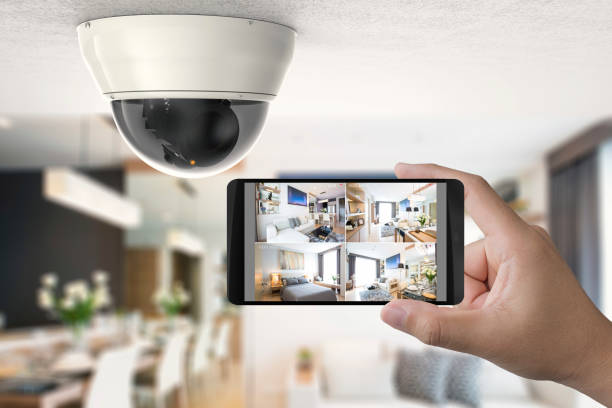CCTV and Surveillance Systems
1. Definition:
• CCTV: Closed-Circuit Television refers to a system where video cameras transmit signals to a specific set of monitors or recording devices, creating a closed circuit that is accessible only to a limited number of people.
• Video Surveillance: This is a broader term encompassing the use of video cameras to monitor a particular area or activities. It may include live monitoring or recording for later review.
2. Components of a CCTV System:
• Cameras: Capture video footage.
• Cables: Transmit signals from cameras to recording or monitoring devices.
• Recording Device (DVR/NVR): Stores and manages video footage.
• Monitors: Display live or recorded footage.
• Power Supply: Provides power to cameras.
3. Types of Cameras:
• Analog Cameras: Traditional cameras that transmit analog signals.
• IP Cameras: Digital cameras that send and receive data via the internet.
• PTZ Cameras: Pan-Tilt-Zoom cameras that can be remotely controlled for a broader range of coverage.
4. Applications:
• Security: Deterrence, surveillance, and evidence gathering in areas like homes, businesses, public spaces, etc.
• Traffic Monitoring: Control traffic flow and monitor road conditions.
• Industrial Monitoring: Ensure safety and security in industrial settings.
• Retail: Prevent theft, monitor customer behavior, and enhance store security.
5. Video Analytics:
• Object Detection: Identify and track objects or people.
• Facial Recognition: Identify and verify individuals.
• Motion Detection: Trigger alerts based on detected movement.
• License Plate Recognition: Capture and interpret license plate information.
6. Integration with Other Systems:
• Modern systems can integrate with access control, alarms, and other security systems.
• Cloud-based solutions allow remote monitoring and management.
7. Emerging Technologies:
• AI Integration: Analyzing video feeds for patterns, anomalies, and automated alerting.
• 4K and Beyond: Higher resolution cameras for clearer images.
• Wireless Systems: Reduced reliance on physical cables.
